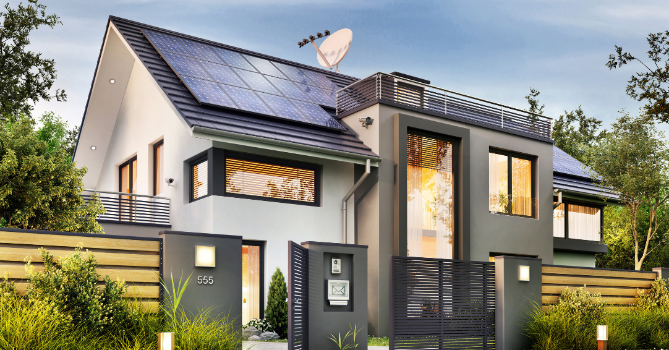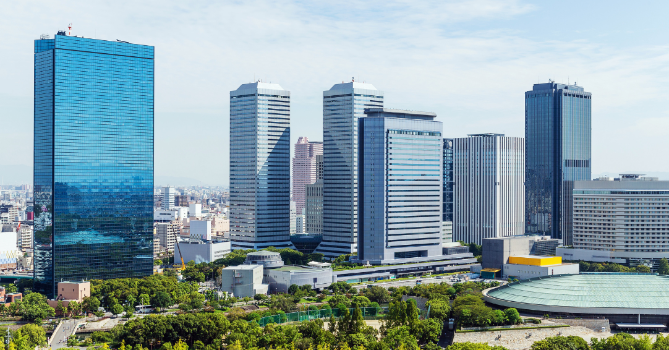.png)
Eco-Friendly Design: Leading the Way in Sustainable Architecture
In today’s world, where every action impacts our environment, architecture plays a pivotal role in shaping a sustainable future. This concept is not just about building structures; it's about thinking forward, planning for a world that survives and thrives. Sustainable architecture blends innovation with responsibility, aiming to minimize environmental damage while maximizing energy efficiency and material sustainability.
The importance of this approach can't be overstated. Buildings are more than just spaces for living or working; they are part of a community's fabric, influencing and reflecting the values of the societies they serve. By integrating eco-friendly practices, architects and builders not only preserve our planet but also create healthier, more livable environments for future generations.
As we delve deeper into this discussion, we will explore how sustainable design is not a trend, but a necessity. This shift towards sustainability in architecture is backed by compelling data and supported by those at the forefront of the industry. Through this exploration, we aim to understand not just the 'how' and 'what,' but the 'why' of sustainable architecture—why it is crucial now more than ever.
The journey of architectural design towards sustainability is both rich and transformative. Decades ago, the focus was primarily on aesthetics and functionality. However, as environmental awareness grew, so did the priorities of architecture. Today, sustainable design is not just an option; it is at the heart of modern architectural practices.
This shift began in earnest during the late 20th century when the global community became more conscious of environmental issues. Architects started to embrace green building practices, such as using recycled materials and designing for energy efficiency. This was not only about reducing the environmental footprint but also about creating spaces that could save on energy costs and offer better indoor air quality.
Key milestones in this evolution include the introduction of LEED certification in the late 1990s, which provided a framework for assessing building sustainability. This system encouraged architects to design buildings that could meet specific sustainability criteria, from water efficiency to energy use.
Projects like the California Academy of Sciences, designed by Renzo Piano, exemplify this evolution. The building is not only a marvel of modern design but also one of the greenest museums in the world. Its roof is covered with native plants, and it features a sophisticated water recycling system, showcasing how integrated sustainable solutions can be.
As we look to the future, the evolution of architectural design continues to accelerate towards more sustainable solutions. The integration of new materials and technologies promises to further reduce the environmental impact of buildings while enhancing their functionality and beauty.
Technology has become a cornerstone of sustainable architecture, revolutionizing how buildings are designed, constructed, and maintained. At the forefront of this revolution is Building Information Modeling (BIM), a digital tool that allows architects and engineers to create highly efficient and precise building models. BIM not only optimizes the use of resources but also significantly reduces waste during construction.
Solar technology is another key player, transforming sunlight into clean energy directly on site. Innovative solar panels can be integrated into windows, roofs, and even building facades, significantly reducing a building's reliance on fossil fuels. This not only helps the environment but also cuts down on energy costs.
Moreover, smart technologies are making buildings more responsive to the needs of their occupants. Systems that automatically adjust lighting and temperature based on real-time usage patterns not only enhance comfort but also improve energy efficiency. These systems learn from daily interactions, continuously optimizing themselves to reduce energy consumption without compromising on comfort.
The integration of such technologies into architecture does not just make environmental sense; it makes economic sense too. As these technologies advance, they become more accessible and cost-effective, allowing for wider adoption in projects of all sizes. This trend is paving the way for a future where sustainable buildings are the norm, not the exception, making a significant contribution to our planet's health and our own well-being.
One standout example of the fusion between design and engineering in pursuit of sustainability is the Edge building in Amsterdam. This office building, completed in 2014, has been heralded as one of the greenest buildings in the world. It's a testament to how thoughtful architecture combined with cutting-edge technology can lead to unprecedented levels of sustainability.
The Edge utilizes a vast array of solar panels, not just on its roof but also integrated into the fac ades, which maximizes solar energy collection throughout the day. This solar array is complemented by an aquifer thermal energy storage system beneath the building. This innovative system stores excess heat generated in the summer underground, which is then used for heating during the winter months, and vice versa for cooling. Such a system significantly reduces the building's reliance on traditional energy sources.

Moreover, the building is equipped with a state-of-the-art LED lighting system that is connected to Ethernet-powered LED fixtures. These lights are adjustable based on occupancy and natural light levels, which not only conserves energy but also creates a more comfortable workspace for employees. Additionally, every light is equipped with a sensor that collects data on light, movement, humidity, and temperature, allowing for an environment that adapts to both the needs of its users and external weather conditions.
The Edge also features a mobile app for its occupants, allowing them to control aspects of their environment like lighting and climate, and even find free desks or meeting rooms, all of which contribute to an optimal balance of comfort and energy efficiency.
The success of The Edge is not just in its technological innovations but in the seamless integration of these technologies into a holistic design that prioritizes sustainability without compromising functionality or aesthetic value. This project exemplifies how the synergy between architectural creativity and engineering ingenuity can craft not only a building but a dynamic, sustainable ecosystem.
Adopting sustainable architecture is not without its challenges. One of the primary hurdles is the initial cost. Sustainable materials and technologies often come with a higher price tag than their conventional counterparts. This can deter builders and clients, especially in a market where initial costs are a decisive factor.
However, a solution to this challenge lies in education and long-term financial analysis. Demonstrating the long-term savings in energy costs and maintenance can offset the upfront expenses. Buildings with sustainable designs typically have lower operating costs, which can be a compelling argument for investors and developers. Moreover, government incentives for green building projects can also help mitigate these initial costs.
Another significant challenge is the resistance to change. Many in the building industry are accustomed to traditional methods and may be hesitant to adopt new technologies or strategies. To overcome this, continuous professional development and training in green building techniques are crucial. Showcasing successful projects and the benefits they bring can also persuade skeptics and encourage broader adoption.
The complexity of sustainable design also presents challenges. Creating truly sustainable buildings requires a holistic approach that considers not just the building itself but its interaction with the surrounding environment. This can be daunting due to the intricate coordination needed among various disciplines involved in building projects.
Integrated design processes offer a solution here. This approach brings together architects, engineers, building managers, and other stakeholders early in the design phase. By collaborating from the start, the team can create more effective and integrated sustainable designs. This not only improves the efficiency and sustainability of the building but also enhances the project's overall workflow.

Despite these challenges, the progress in sustainable architecture is promising. With continued innovation and commitment, the field is overcoming obstacles and paving the way for a more sustainable future in construction and design.
The future of architectural sustainability looks promising and is driven by innovation and a deeper commitment to green building. One emerging trend is the increased use of biodegradable materials. Research is currently exploring how materials like mycelium, the root structure of mushrooms, can be used in building construction. These materials not only reduce waste but also decompose without harming the environment once their lifespan ends.
Another significant trend is the rise of net-zero buildings. These structures are designed to produce as much energy as they consume over the course of a year, achieved through a combination of energy efficiency measures and renewable energy production. This approach is becoming more feasible with advancements in solar technology and energy storage solutions, making it a realistic goal for many new buildings.
The integration of nature into building design, often referred to as biophilic design, is also gaining traction. This trend involves more than just adding plants to interiors; it's about creating a deeper connection between the inhabitants and the natural environment. This connection has been shown to improve mental health, productivity, and overall well-being.
Furthermore, digitalization plays a crucial role in the future of sustainable architecture. Tools like BIM are becoming more advanced, enabling architects and engineers to simulate and optimize building performance even before construction begins. This predictive capability allows for better planning and can significantly reduce waste during construction.
As we look forward, these trends signify a shift towards more sustainable and human-centric architecture, aligning modern design practices with ecological responsibility and innovation.
As we've explored, the shift towards sustainable architecture is not just a trend—it's an essential progression of the building industry. By embracing innovative technologies, materials, and design philosophies, architects and engineers are creating buildings that offer more than just shelter. These structures enhance the quality of life, conserve natural resources, and create a positive impact on the environment. The journey to sustainability in architecture presents challenges, but with continuous innovation and collaboration, these challenges are being transformed into opportunities. As we move forward, the commitment to sustainable building practices will undoubtedly play a pivotal role in shaping a healthier, more sustainable future. Let's continue to push the boundaries of what's possible, fostering an environment where design and sustainability go hand in hand.